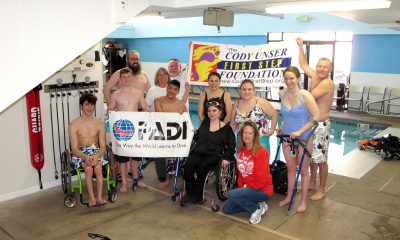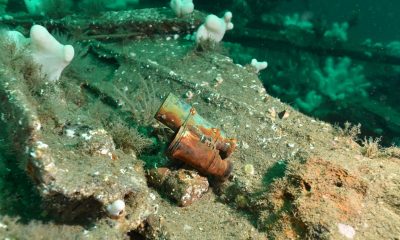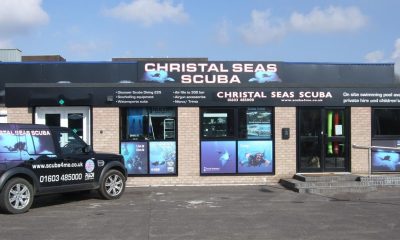News
Meet Our Club: Ocean Diver

Want to join a dive club? In this new series, we take a look at grassroots diving and find out what’s happening on the club scene in the UK and around the world…
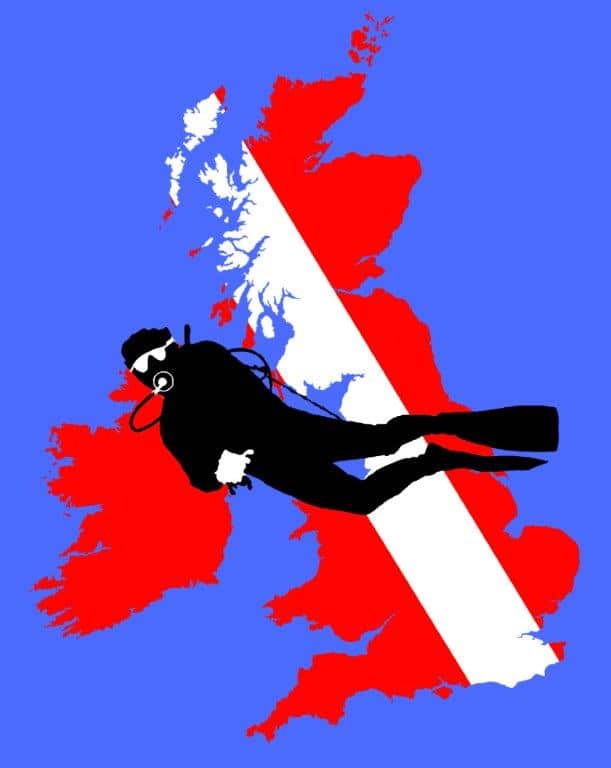 What is the name of your club?
What is the name of your club?
Ocean Diver
Where is your club based?
Purley and Caterham, South London, Surrey Borders
Club affiliations (i.e. BSAC, PADI, SAA, etc.)
The club is not affiliated to any agency although the sister dive school offers PADI courses.
Where and when do you meet?
We meet on the first Tuesday of each month at 8pm in the Jolly Farmers Pub in Purley. Our pool sessions are the first Saturday of each month in Caterham.
How do you respond to the challenge of recruiting new members?
The club and the school are intrinsically linked. We share the information about the dive club with any new diver who comes to the dive school. We are active on social media so potential members can see what we get up to, and that we’re an active club with a mix of divers. We have a loyal and committed group of members so they share our leaflets and spread the word through friends and diving buddies they meet abroad.
The biggest aspect of membership is retaining members. Divers want to dive so we offer a range of day trips and week trips so all experience levels can get involved. We share information on any kit that is going cheap to increase the accessibility for divers, and experienced divers buddy up with newer divers. We have a mix of activities at our club meetings such as visiting speakers (e.g. Dr Mark Downs, Paul “Duxy” Duxfield, Ian France) and workshops (e.g. dive scenarios, kit care which includes pulling old first stages apart) as well as time to just catch up on the diving we’ve done that month.
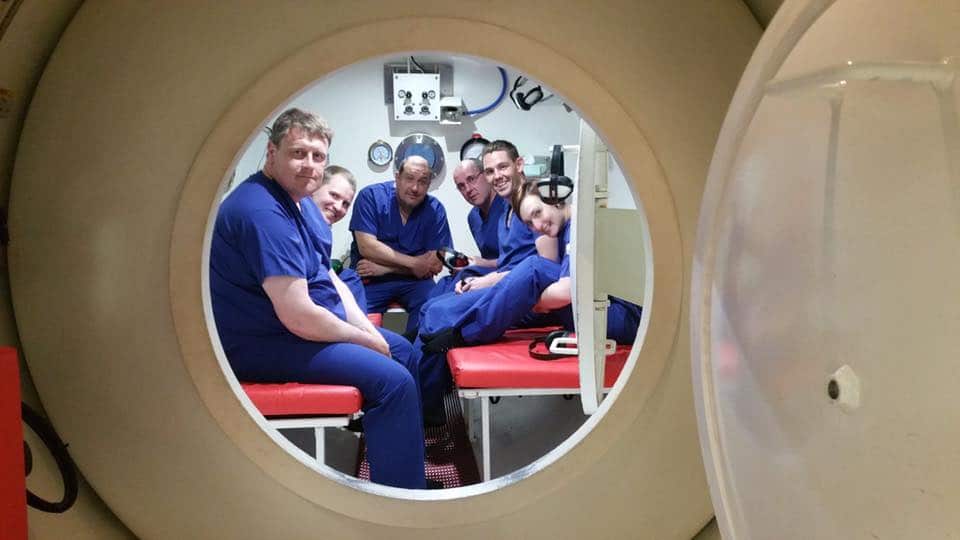
What facilities and resources does the club use/have?
We have the use of a room at the pub which is handy. We gather in the bar and then head upstairs for either a talk or a workshop. We have a standing booking at a local pool, and access to a stunning private pool for additional pool sessions. We have invested in kit for newer divers to use whilst they build their own kit up.
We have supportive instructors and experienced divers who are able to offer training and coaching and club members are generous in helping others get into the water.
What kind of diving do you do, and where?
Our main focus is UK Diving so we have around four weekend trips abroad. Last year we visited Plymouth, Chesil and the Farne Islands, with a monthly trip to an inland dive site and a few day trips such as Brighton and Eastbourne. In 2018 we’ve Weymouth, the Isle of Man and Porthkerris in the diary and we’ll supplement these with inland dive sites and south coast boat dives.
We have an annual Rescue Refresher which we offer to club members to keep their Rescue skills fresh. We also have an annual trip to the Dive Chamber to experience the effects of 50m. We arrange trips to dive related experiences such as the Ocean Film Festival. This is a great way of including non-diving partners as they come along too.
2018 will see the inaugural Zombie Apocalypse PADI Specialty which will be a day of mystery, fun and excitement!

Do you organise any club trips abroad, and if so, where?
We arrange one overseas trip a year. In 2016 the club visited the Red Sea and Nemo33 in Belgium; in 2017 it was Malta. In 2018 we are heading to Lanzarote to visit the underwater museum. Members often buddy up to dive overseas with each other. In the last couple of years this has included Spain, Iceland, the Netherlands, Truk Lagoon and Cyprus.
Does your club have any special interests such as conservation, special projects, etc?
Our main aim is to open up UK Diving to as many people as possible and share with them the superb opportunities there is right here on their doorstep. We have a very popular Youth section with nearly 20 youngsters regularly attending pool sessions, and some moving onto the Open Water course. We will build on this with more trips and activities that involve the younger divers such as mini club talks from visiting speakers prior to the main club talk, and a weekend trip adjusted for depth limits.
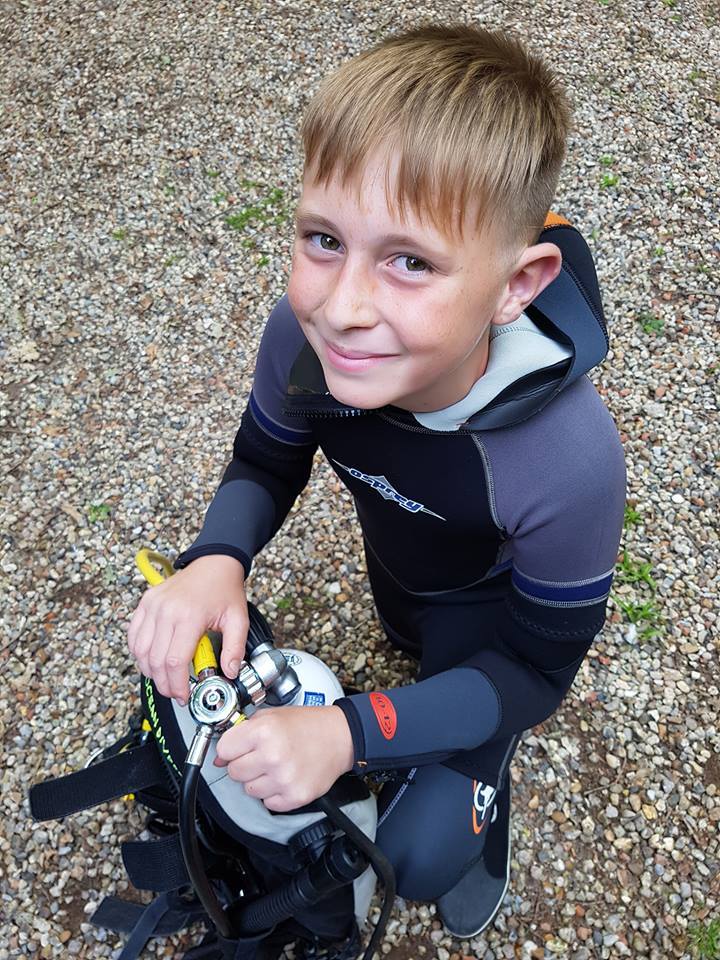
We now have three Youth Ocean Diver Ambassadors (nicknamed YODAs) who come along to pool sessions and mentor new children divers. Whilst they are not able to take any responsibility with courses, they are able to jointly plan mini dives, do buddy checks together and they have started to demonstrate skills alongside the instructor. This builds their confidence and their skill set and creates a great atmosphere in pool sessions. We supplement this with information on conservation and the marine life around the UK. We take them through a little bit of physics or physiology each month to link theory to practical in an accessible way, and to ignite their passion to learn more about diving and marine life in general.
We realised that there was a big drop off in female divers, and we were struggling to fill spaces on boats as people’s holiday was limited. As a result we have started “Flexi Trips” where we offer divers the opportunity to book their own accommodation so they can bring partners, children and dogs along, or where we offer the accommodation out to partners but then have fewer spots on the boat. Members have taken advantage of this on every trip we’ve arranged in the UK in 2017, and are doing so again in 2018. As this builds we will be able to buddy up on child/dog care and the whole family can get involved.
Our dive club members are varied in their own interests; photography and wrecks are the main two so we try to combine these when choosing dive sites. The James Eagen Layne is a perfect example of a site that keeps everyone happy!
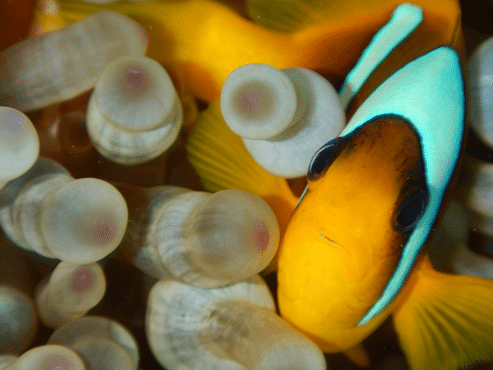
Does your club have any claims to fame or any particularly interesting stories… or members?
Colin Pullen is a real, bona fide Zombie instructor!
What are the club’s plans for the future?
We want to continue what we’ve started: increase accessibility to UK Diving by offering different trips to get people’s fins in the water; give children the chance to get into the sea; and, dive as much as we can.
Where can people find out more about your club?
- www.oceandiver.co.uk
- https://www.facebook.com/OceanDiver.co.uk/
- https://twitter.com/OceanDiveruk
- https://www.instagram.com/oceandiver_uk/
- Call: 07711266476
You’re always to come down to the Jolly Farmers on the first Tuesday of each month from 8pm and meet us too!
Finally… if you could sum up your club in just one sentence, what would it be?
It’s all about the diving!
Blogs
Northern Red Sea Reefs and Wrecks Trip Report, Part 2: Wall to Wall Wrecks

Jake Davies boards Ghazala Explorer for an unforgettable Red Sea diving experience…
The second day’s diving was a day full of wreck diving at Abu Nuhas, which included the Chrisoula K, Carnatic, and Ghiannis D. The first dive of the day was onto the Chrisoula K, also known as the wreck of tiles. The 98m vessel remains largely intact where she was loaded with tiles which can be seen throughout the hold. The stern sits at 26m and the bow just below the surface. One of the highlights of the wreck is heading inside and seeing the workroom where the machinery used for cutting the tiles are perfectly intact. The bow provided some relaxing scenery as the bright sunlight highlighted the colours of the soft coral reef and the many reef fish.

Following breakfast, we then headed to the next wreck, which was the Carnatic. The Carnatic is an 89.9m sail steamer vessel that was built in Britain back in 1862. She ran aground on the reef back in 1869 and remains at 27m. At the time, she was carrying a range of items, including 40,000 sterling in gold. An impressive wreck where much of the superstructure remains, and the two large masts lay on the seafloor. The wooden ribs of the hull provide structures for lots of soft corals, and into the stern section, the light beams through, bouncing off the large shoals of glass fish that can be found using the structure as shelter from the larger predators that are found outside of the wreck.

The final wreck at Abu Nuhas was the Ghiannis D, originally called ‘Shoyo Maru,’ which was 99.5m long and built in Japan back in 1969 before becoming a Greek-registered cargo ship in 1980. The ship then ran aground on the reef on April 19th, 1983, and now sits at the bottom at a depth of 27m. Heading down the line, the stern of the ship remains in good condition compared to the rest of the hull. The highlight of the wreck, though, is heading into the stern section and down the flights of stairs to enter the engine room, which remains in good condition and is definitely worth exploring. After exploring the interior section of the ship, we then headed over to see the rest of the superstructure, where it’s particularly interesting to see the large table corals that have grown at the bow relatively quickly considering the date the ship sank. After surfacing and enjoying some afternoon snacks, we made sure everything was strapped down and secured as we would be heading north and crossing the Gulf of Suez, where the winds were still creating plenty of chop.

The next morning, it was a short hop to Ras Mohammed Nature Reserve for the next couple of days of diving. The 6am wake-up call came along with the briefing for the first site we would be diving, which was Shark & Yolanda. The low current conditions allowed us to start the dive at Anemone City, where we would drift along the steep, coral-filled wall. These dives involved drifts, as mooring in Ras Mohammed wasn’t allowed to protect the reefs. As a dive site, Shark & Yolanda is well-known and historically had a lot of sharks, but unfortunately not so many in recent years, especially not so early in the season. However, there was always a chance when looking out into the blue.

The gentle drift took us along the steep walls of the site, with plenty of anemone fish to be seen and a huge variety of corals. It wasn’t long into the dive before we were accompanied by a hawksbill turtle, who drifted with us between the two atolls before parting ways. Between the two reefs, the shallow patch with parts of coral heads surrounded by sand provided the chance to see a few blue-spotted stingrays that were mainly resting underneath the corals and are always a pleasure to see. With this being the morning dive, the early sunlight lit up the walls, providing tranquil moments. Looking out into the blue, there was very little to be seen, but a small shoal of batfish shimmering underneath the sunlight was a moment to capture as we watched them swim by as they watched us.

Towards the end of the dive, we stopped at the wreck of the Jolanda where the seafloor was scattered with toilets from the containers it was carrying. This provided a unique site to make a safety stop, which was also accompanied by a large barracuda slowly swimming by, along with a hawksbill turtle calmly swimming over the reef as the sun rays danced in the distance.
For the next dive, we headed north to the Strait of Tiran to explore the reefs situated between Tiran Island and Sharm El Sheik, which were named after the British divers who had found them. We started on Jackson before heading to Gordons Reef, where we also did the night dive. All the atolls at these sites provided stunning, bustling coral reefs close to the surface and steep walls to swim along, which always provided the opportunity to keep an eye out for some of the larger species that can be seen in the blue. Midwater around Jackson Reef was filled with red-toothed triggerfish and shoals of banner fish, which at times were so dense that you couldn’t see into the blue. Moments went by peacefully as we enjoyed the slow drift above the reef, watching these shoals swim around under the mid-afternoon sun.

The night dive at Gordon’s Reef was mainly among the stacks of corals surrounded by sand, which was great to explore under the darkness. After some time circling the corals, we came across what we were really hoping to find, and that was an octopus hunting on the reef. We spent the majority of the dive just watching it crawl among the reef, blending into its changing surroundings through changes in colour and skin texture. It’s always so fascinating and captivating to watch these incredibly intelligent animals, in awe of their ability to carry out these physical changes to perfectly blend into the reef. Before we knew it, it was time to head back to the boat to enjoy a well-deserved tasty dinner prepared by the talented chefs onboard.
Check in for the 3rd and final part of this series from Jake tomorrow!
To find out more about the Northern Red Sea reef and wrecks itineraries aboard Ghazala Explorer, or to book, contact Scuba Travel now:
Email: dive@scubatravel.com
Tel: +44 (0)1483 411590
Photos: Jake Davies / Avalon.Red
Marine Life & Conservation
Double Bubble for Basking Sharks

 The Shark Trust is excited to announce that, for two more days only, all donations, large or small, will be doubled in the Big Give Green Match Fund!
The Shark Trust is excited to announce that, for two more days only, all donations, large or small, will be doubled in the Big Give Green Match Fund!
Donate to Basking in Nature: Sighting Giants
The Shark Trust is hoping to raise £10k which will be doubled to £20k. This will go towards Basking in Nature: Sighting Giants. And they need YOUR help to reach they’re goal.
The Shark Trust’s citizen science project is to monitor and assess basking sharks through sightings; encouraging data collection, community engagement, and promoting nature accessibility. This initiative aims to enhance health and wellbeing by fostering a deeper connection with British Sharks.
Campaign Aims
- Increase citizen science reporting of Basking Sharks and other shark sightings to help inform shark and ray conservation.
- Provide educational talks about the diverse range of sharks and rays in British waters and accessible identification guides!
- Create engaging and fun information panels on how to ID the amazing sharks and rays we have on our doorstep! These can be used on coastal paths around the Southwest. With activities and information on how you can make a difference for sharks and rays!
- Promote mental wellbeing through increasing time in nature and discovering the wonders beneath the waves!
Donate, and double your impact. Click Here
-

 News3 months ago
News3 months agoHone your underwater photography skills with Alphamarine Photography at Red Sea Diving Safari in March
-

 News3 months ago
News3 months agoCapturing Critters in Lembeh Underwater Photography Workshop 2024: Event Roundup
-

 Marine Life & Conservation Blogs2 months ago
Marine Life & Conservation Blogs2 months agoCreature Feature: Swell Sharks
-

 Blogs2 months ago
Blogs2 months agoMurex Resorts: Passport to Paradise!
-

 Blogs2 months ago
Blogs2 months agoDiver Discovering Whale Skeletons Beneath Ice Judged World’s Best Underwater Photograph
-

 Gear Reviews2 months ago
Gear Reviews2 months agoGear Review: Oceanic+ Dive Housing for iPhone
-

 Marine Life & Conservation2 months ago
Marine Life & Conservation2 months agoSave the Manatee Club launches brand new webcams at Silver Springs State Park, Florida
-

 News3 months ago
News3 months agoWorld’s Best Underwater Photographers Unveil Breathtaking Images at World Shootout 2023





